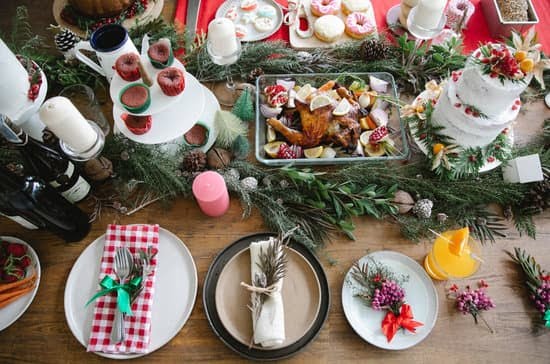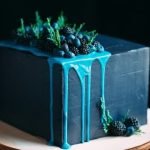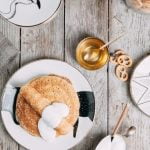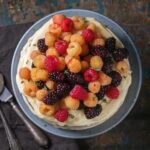Are you ready to learn how to decorate a rectangular cake? Decorating a cake is a form of art, and mastering the techniques involved can turn a simple sheet cake into a stunning centerpiece for any occasion. In this article, we will explore the essential tools and ingredients needed for decorating, as well as provide step-by-step instructions on creating beautifully decorated rectangular cakes.
Whether you are a beginner or someone looking to perfect their cake decorating skills, understanding the shape and size of the cake is crucial. We will discuss how to choose the right frosting and filling, as well as mastering the basics such as crumb coating and leveling. Additionally, we will delve into techniques for smoothly decorating the sides and edges, creative design ideas for decorating the top, and adding final touches such as borders, writing, and decorative elements.
From troubleshooting common decorating issues to showcasing your beautifully decorated rectangular cake, this article aims to guide you through every aspect of decorating a rectangular cake. Whether it’s a birthday celebration, wedding reception, or any other special occasion, your beautifully decorated rectangular cake is sure to impress your guests. So let’s get started on mastering the art of decorating a rectangular cake.
Essential Tools and Ingredients for Decorating
Decorating a rectangular cake requires certain essential tools and ingredients to ensure a successful and visually appealing outcome. Some of the basic tools you will need include a turntable, offset spatula, bench scraper, piping bags and tips, and a cake leveler. These tools will help you achieve smooth and professional-looking decorations on your rectangular cake.
In addition to tools, using the right ingredients is crucial for successful cake decorating. High-quality butter, powdered sugar, and pure vanilla extract are essential for making delicious and creamy buttercream frosting. You may also need food coloring gels or edible paints to add color to your decorations. Furthermore, having various types of sprinkles, edible pearls, or fondant can add texture and dimension to your design.
It is important to note that the type of tools and ingredients you use can greatly impact the overall look and taste of your decorated rectangular cake. Investing in good quality tools and using fresh, high-grade ingredients will elevate the presentation of your cake and enhance its flavor.
| Tools | Ingredients |
|---|---|
| Turntable | Powdered Sugar |
| Offset Spatula | Pure Vanilla Extract |
| Bench Scraper | High-Quality Butter |
Knowing how to properly use these tools and ingredients will set the foundation for creating beautifully decorated rectangular cakes that will impress any audience or guest at any special occasion.
Understanding the Shape and Size of the Cake
When it comes to decorating a rectangular cake, it’s important to first understand the shape and size of the cake you are working with. Rectangular cakes come in various sizes, ranging from small sheet cakes to larger ones meant for parties and events. Understanding the dimensions of your cake will help you determine the amount of frosting you’ll need, as well as how to proportionately decorate the top and sides.
Determining the Surface Area
Before you begin decorating your rectangular cake, it’s helpful to calculate the surface area of the cake. This will give you an idea of how much frosting and decoration you’ll need. To do this, simply measure the length and width of the cake in inches and then multiply these two numbers together. For example, if your cake is 9 inches by 13 inches, the surface area would be 117 square inches.
Consideration for Height
In addition to understanding the length and width of your rectangular cake, it’s also important to consider its height. Taller cakes may require more structural support when adding decorations like fondant or tiered designs. It’s also important to consider that taller cakes may take longer to bake and cool, so be sure to factor this into your decorating timeline.
Once you have a good understanding of the shape and size of your rectangular cake, you can move on to choosing the right frosting and filling to complement it. By understanding these foundational elements, you’ll be better equipped to create a beautifully decorated masterpiece that not only looks stunning but tastes delicious too.
Choosing the Right Frosting and Filling
When it comes to decorating a rectangular cake, the choice of frosting and filling plays a crucial role in achieving the desired look and taste. The right combination can make or break the overall appeal of your creation. To ensure that you choose the perfect frosting and filling for your rectangular cake, it’s important to consider factors such as flavor, texture, and the design you have in mind.
One popular option for frosting a rectangular cake is buttercream. This classic frosting is versatile, easy to work with, and can be flavored in various ways. It’s also great for creating smooth finishes and intricate designs.
On the other hand, if you prefer a lighter and fluffier frosting, whipped cream or cream cheese frosting might be more suitable. As for fillings, fruit preserves, flavored ganache, or even a layer of pastry cream can add an extra dimension of flavor to your cake.
In addition to considering flavor and texture, it’s important to take into account the temperature conditions that your cake will be served in. For example, if your decorated rectangular cake will be displayed at an outdoor event during warm weather, you’ll want to avoid using frostings that are too soft or prone to melting.
Instead, consider opting for stable frostings like fondant or stabilized whipped cream. By factoring in these considerations when choosing your frosting and filling, you’ll be able to create a beautifully decorated rectangular cake that not only looks stunning but also tastes delicious.
| Frosting Options | Popular Fillings |
|---|---|
| Buttercream | Fruit preserves |
| Whipped cream | Flavored ganache |
| Cream cheese frosting | Pastry cream |
Mastering the Basics
When it comes to decorating a rectangular cake, mastering the basics of crumb coating and leveling is essential for achieving a professional-looking finish. Before you can get creative with your decorative designs, it’s important to ensure that the surface of the cake is smooth and even.
To start, here are the essential steps for crumb coating and leveling your rectangular cake:
- Leveling the Cake: Use a long serrated knife or cake leveler to trim off any domed or uneven areas on the top of the cake. This will create a flat surface for decorating.
- Crumb Coating: Apply a thin layer of frosting to the entire surface of the cake to seal in any loose crumbs. This will create a smooth base for adding additional layers of frosting and decorations.
It’s important to note that these steps require patience and precision. By taking your time to properly crumb coat and level your rectangular cake, you’ll set yourself up for success when it comes to adding your desired decorative elements. Remember, a well-prepared surface will make it easier to achieve professional-looking results with your final design.
In addition, keep in mind that the type of frosting you choose can greatly impact how smoothly you are able to coat and level your cake. Consider using a spreadable buttercream or ganache for best results when crumb coating and leveling your rectangular cake.
By mastering these basic techniques, you’ll be well on your way to creating a beautifully decorated rectangular cake that’s sure to impress at any special occasion.
Techniques for Smoothly Decorating the Sides and Edges
When it comes to decorating a rectangular cake, paying close attention to the sides and edges is essential for achieving a polished and professional look. Whether you’re working with buttercream, fondant, or ganache, there are various techniques that can help you achieve smooth and flawless results.
Crumb Coating
Before applying the final layer of frosting or fondant, it’s important to start with a crumb coat. This thin layer of frosting helps to seal in any loose crumbs and create a smooth base for the final decoration. To crumb coat a rectangular cake, use an offset spatula to spread a thin layer of frosting over the entire cake, making sure to fill in any gaps or uneven areas.
Applying the Final Layer
Once your crumb coat has set, it’s time to apply the final layer of frosting or fondant. For buttercream frosting, use an offset spatula to spread a generous amount of frosting over the top and sides of the cake. Smooth out any rough patches using a bench scraper or icing smoother. If using fondant, roll out the fondant to the appropriate size and carefully drape it over the cake, smoothing out any air bubbles with your hands.
Creating Sharp Edges
To achieve crisp and sharp edges on your rectangular cake, use a bench scraper or ruler to guide the smoothing process. Hold the tool at a 90-degree angle against the sides of the cake while gently pressing towards the center. Repeat this process until you achieve clean lines and sharp corners. Taking your time with this step will result in beautifully smooth sides and edges on your rectangular cake.
Mastering these techniques for smoothly decorating the sides and edges of a rectangular cake will elevate your baking skills and impress your guests with professional-looking results. With practice and patience, you’ll be able to create flawlessly decorated cakes that are visually appealing from every angle.
Creative Design Ideas and Tips for Decorating the Top
When it comes to decorating the top of a rectangular cake, there are endless creative possibilities to explore. Whether you’re celebrating a special occasion or just want to add a little flair to your baked creation, the top of the cake is where you can really let your imagination run wild. Here are some ideas and tips for decorating the top of your rectangular cake:
1. Fresh Fruit Arrangements: One way to add a pop of color and freshness to your cake is by incorporating fresh fruit into the design. Consider arranging sliced strawberries, raspberries, blueberries, or kiwi in a decorative pattern on top of the frosting.
2. Piping and Writing: Using a piping bag with different tips, you can pipe intricate designs, borders, or even write personalized messages on the top of the cake. Practice with different piping techniques and experiment with various colors of frosting to create visually stunning designs.
3. Edible Flowers and Decorative Elements: Edible flowers such as pansies, violets, or rose petals can be used to add an elegant touch to the top of your cake. Additionally, consider using edible glitter, sprinkles, or decorative sugar shapes to make your cake stand out.
Remember that when decorating the top of a rectangular cake, it’s important to consider the overall theme or occasion for which you are making the cake. Whether it’s a birthday party, wedding celebration, or holiday gathering, incorporating elements that reflect the mood and purpose of the event will help tie everything together beautifully.
With these creative ideas and tips in mind, you’ll be well-equipped to tackle decorating the top of your rectangular cake with confidence and style. Experiment with different techniques and have fun exploring new ways to make your cake look as good as it tastes.
Adding Final Touches
Once you have successfully decorated the top and sides of your rectangular cake, it’s time to add the final touches that will truly make it stand out. Borders, writing, and decorative elements can elevate the overall look of your cake and give it a professional finish.
One important aspect to consider when adding borders and writing is the consistency of your frosting. It’s crucial to ensure that the frosting is at the right temperature and consistency so that you can achieve clean lines and smooth decorations. Using a piping bag with different tips can help create different border designs such as shells, rosettes, or zig-zags. For writing on the cake, using a small round tip can help create neat lettering.
In addition to borders and writing, decorative elements such as fondant flowers, chocolate curls, or edible pearls can add an extra layer of elegance to your rectangular cake. These decorative elements can be made in advance and carefully placed on the cake to enhance its overall appearance.
Remember to take your time when adding these final touches, as attention to detail is key in creating a beautifully decorated rectangular cake. With patience and practice, you can master the art of adding borders, writing, and decorative elements to showcase your creativity and skills in cake decorating.
Overall, by paying attention to detail when adding borders, writing and other decorative elements will help ensure that your rectangular cake looks refined and beautiful.
Troubleshooting Common Decorating Issues
Have you ever experienced frustration when trying to decorate a rectangular cake? Sometimes, despite our best efforts, things just don’t go as planned. In this section, we will discuss some common decorating issues that may arise and provide tips on how to troubleshoot them.
One common problem that decorators encounter is air bubbles in the frosting. This can create an uneven and bumpy surface on the cake, which is not aesthetically pleasing. To prevent this issue, make sure to mix your frosting thoroughly and avoid overbeating it. If air bubbles still appear, use a toothpick or small spatula to carefully pop them and smooth out the frosting.
Another issue that often arises is the frosting becoming too runny or too stiff, making it difficult to work with. To remedy this problem, adjust the consistency of your frosting by adding more powdered sugar to thicken it or a small amount of milk or cream to thin it out. It’s essential to find the right balance for your frosting that allows for easy spreading and decorating.
Lastly, cake crumbs mixing into the frosting during the crumb coating process can be frustrating. To avoid this, ensure that your cake layers are completely cooled before applying any frosting. Additionally, using a gentle touch and a light hand while crumb coating will help minimize the risk of crumbs getting mixed into the frosting.
By being aware of these common decorating issues and implementing these troubleshooting tips, you can overcome challenges and achieve a beautifully decorated rectangular cake that you can be proud of.
Conclusion
In conclusion, decorating a rectangular cake can be a fun and rewarding experience, especially when you have the right tools, ingredients, and techniques at your disposal.
By understanding the shape and size of the cake, choosing the appropriate frosting and filling, mastering the basics of crumb coating and leveling, and utilizing various decorating techniques for both the sides and edges as well as the top of the cake, you can create a stunning masterpiece that will impress your family and friends.
Whether you opt for simple designs or more complex creative ideas, there are endless possibilities for decorating a rectangular cake. From adding borders, writing personalized messages, to incorporating decorative elements such as flowers or edible decorations, you have the opportunity to showcase your personality and creativity through your cake designs.
While it’s normal to encounter some common decorating issues along the way, such as air bubbles in the frosting or uneven edges, don’t be discouraged. With practice and patience, you can hone your skills in decorating rectangular cakes and overcome any challenges that may arise. So go ahead and experiment with different design ideas to elevate your cake decorating game.
Frequently Asked Questions
How Do You Put Icing on a Rectangular Cake?
To put icing on a rectangular cake, start by placing the cake on a flat surface. Then, use a spatula to spread a layer of icing evenly across the top of the cake. Next, carefully ice the sides of the cake, making sure to cover them completely.
How Do You Smooth a Rectangle Cake?
Smoothing a rectangular cake involves using a bench scraper or offset spatula to gently smooth the icing on the top and sides of the cake. Start by evening out the top layer of icing and then work your way around each side, being careful to create clean, straight edges.
What Are the 7 Different Cake Decorating Techniques?
The 7 different cake decorating techniques include piping (using various tips to create designs with frosting), fondant work (covering cakes with rolled fondant and creating shapes), buttercream flowers (using buttercream frosting to make intricate floral designs), royal icing (decorating with detailed piped designs using royal icing), edible printing (adding edible images or patterns to cakes), stenciling (using food-safe stencils and powdered sugar or cocoa to decorate cakes), and sculpting (shaping fondant or other edible materials into various forms).
Each technique offers unique ways to create stunning cake designs.

Welcome to our cake decorating blog! My name is Destiny Flores, and I am the proud owner of a cake decorating business named Cake Karma. Our mission is to provide delicious, beautiful cakes for all occasions. We specialize in creating custom cakes that are tailored specifically to each customer’s individual needs and tastes.





